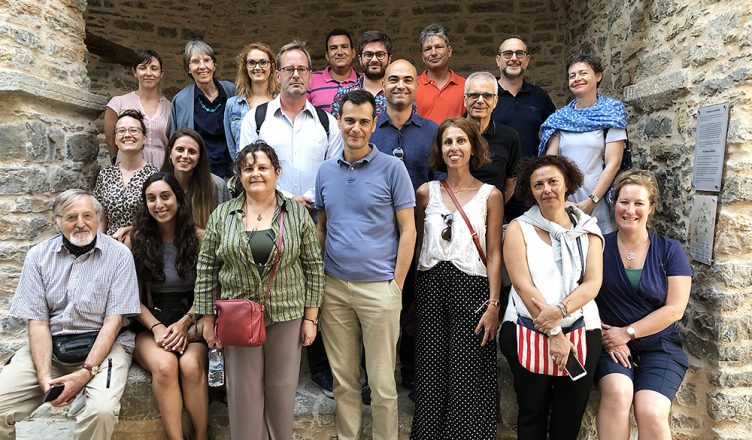From 9 to 13 September 2019, PIOP welcomed all partners to the Mingei Consortium Meeting onChios, Greece, where the Mingei pilot on mastic is deployed. With coordinated efforts, the valuable help of the Mastic Museum staff and PIOP’s excellent relations with the local community of Chios, we were able to organize a fruitful meeting.
Visit at the Chios Gum Mastic Growers Association
On Monday morning of 9 September 2019 , the consortium visited the Chios Gum Mastic Growers Association – which represents the entire community of Mastic cultivators on Chios – and had an interesting meeting with the president Mr G. Toumpos. One of the main aims of the Association is with respect of growers-associates labour and efforts, to stand by them as an assistant, by contributing to the upgrade of mastiha cultivation, to the improvement of its producing procedure and of course to the guarantee of the highest possible profits. The consortium received input on the needs of mastic growers, ranging from practical issues to strategical goals.
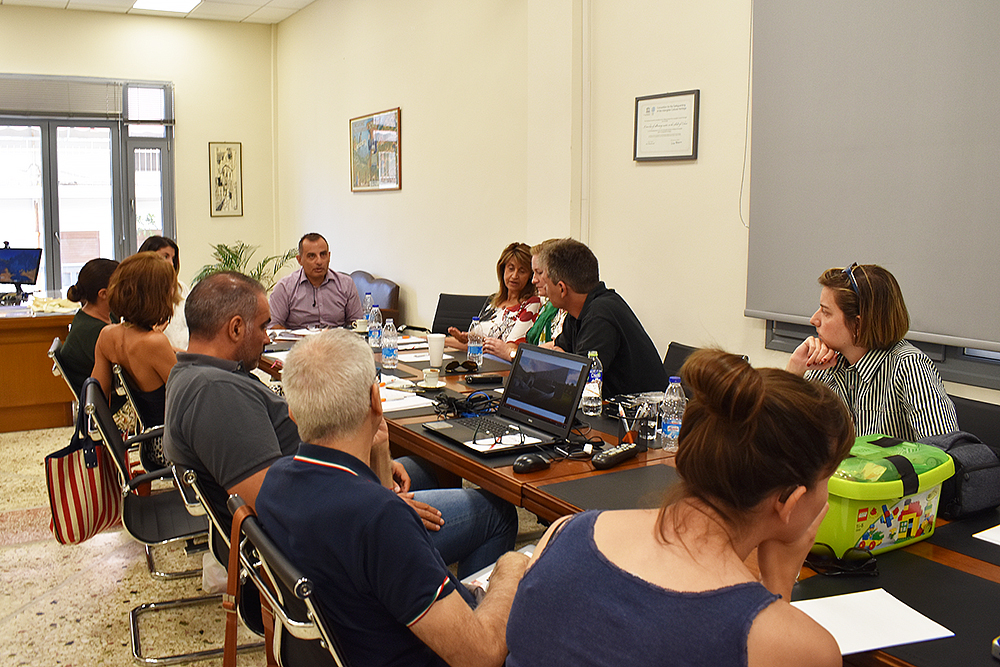
Visit at the Mediterra S.A.
In the afternoon, the consortium visited the Mediterra S.A. Company and had a meeting with Ms Marialena Kavoura. Mediterra was founded by Chios Mastiha Growers Association, with the main objective to develop, product, promote, and sale mastiha products worldwide. Mediterra is a company initiated by the Association and it has the role of a marketing tool for mastic products. Today, they are also building a research centre for pharmaceutical and medical uses of mastic.
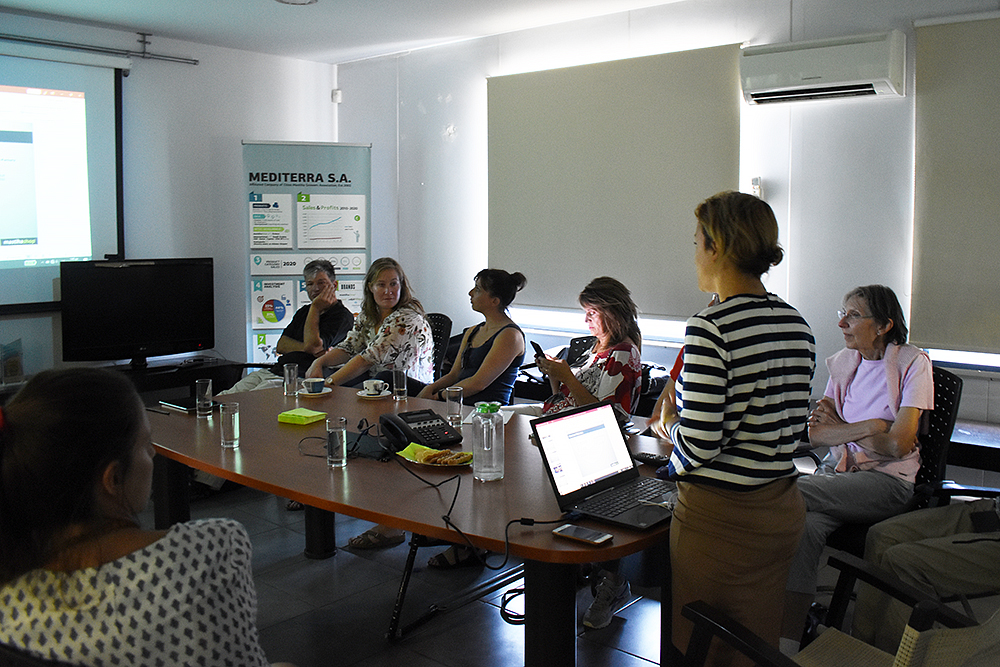
The main concern of Mediterra today is to promote mastic in the markets of U.S.A. and Australia, among others, where mastic is not known. Mastic is nowadays considered a super food, thus the main marketing strategy for those new markets is the pharmaceutical and medical use of mastic. Major export countries include those where mastic is used in their daily routine, such as in Saudi Arabia.
Mastic cultivation and agritourism
On Tuesday morning of 10 September 2019, the consortium met with thematic tourism stakeholders and with Ms Boura, who is the owner of the tourist Agency named Mastic Culture, in order to provide the experiential presentation in the field, at the Mastic Museum.At the open air exhibition of the Mastic Museum, where pathways have been developed, as an itinerary through the mastic field, participants became acquainted with the special characteristics of mastic cultivation and the agricultural landscape of southern Chios.
Mastic cultivation steps, processes and practices were demonstrated to and performed by the participants, providing a first-hand experience of the labour, the dexterity and the required practical difficulties, as well as the consideration of efficient use.
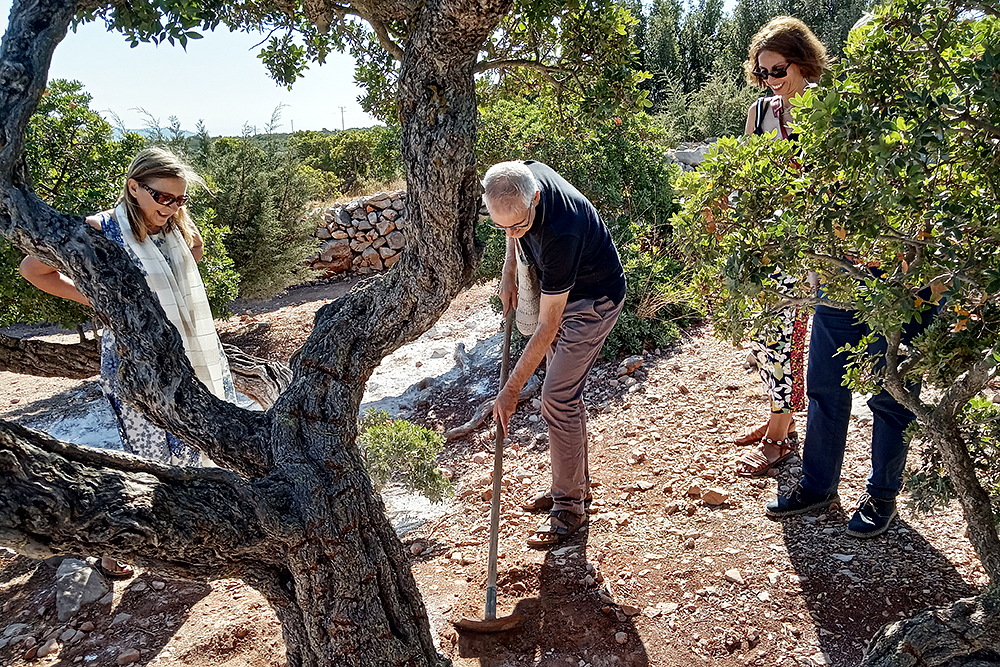
Plenary meeting
On the first day of the official consortium meeting, Wednesday 11 September, all partners and guests from the advisory board (Ms Stavroula – Villy K. Fotopoulou and Mr David Fajolles) attended presentations of the progress of the project and discussed with the consortium. During the day, all participants viewed the motion capture process that was taking place at the mastiha trees of the museum.
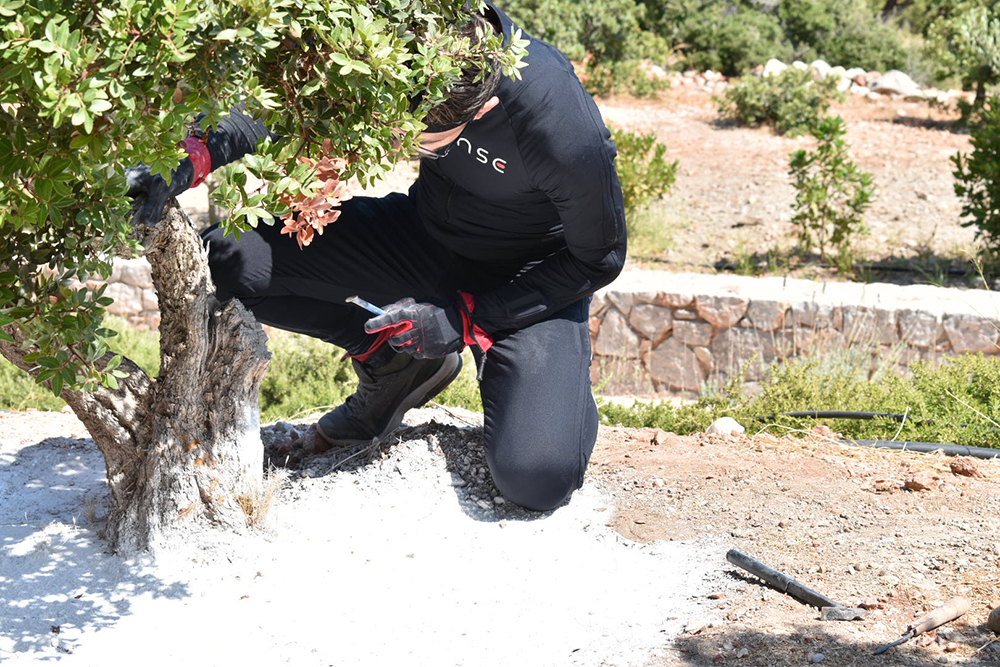
A guided tour of the exhibition space provided the opportunity to become acquainted with the history of mastic, the process of the mastic cultivation and the architecture of the settlements. Everyone became familiar with the history of the cooperatives, the Chios Mastiha Growers Association, the steps in the mastic production Line, its uses and the products.
Keynote talk by Villy Fotopoulou
Intangible Cultural Heritage, Local Knowledge and Sustainable Management of Cultural Assets and Environmental Recourses
During her talk, Ms Fotopoulou provided insights in Intangible Cultural Heritage, Local Knowledge, and Sustainable Management of Cultural Assets and Environmental Recourses. Ms Fotopoulou provided guidelines on the policies for the preservation of Intangible Cultural Heritage as acquired from the collaboration of the General Directorate of Antiquities and Cultural Heritage, of the Ministry of Culture and Sports – Hellenic Republic with UNESCO, regarding the inscription of elements of Greek Cultural Heritage in the Representative List of Intangible Heritage of Humanity.
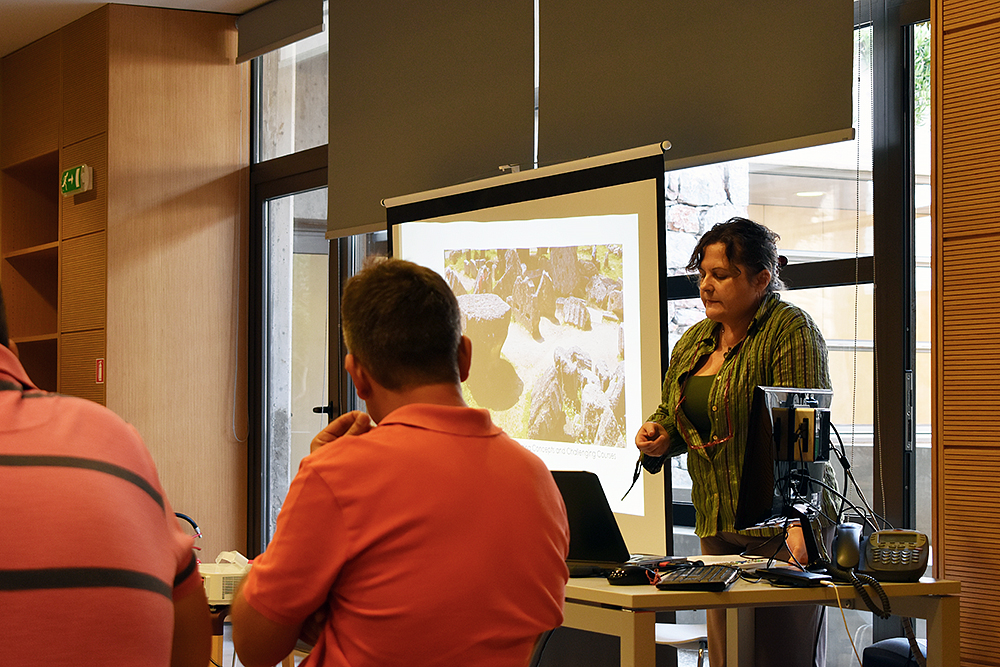
Keynote talk and guided tour by Manolis Vournous
The architecture of the Mastiha villages
In the afternoon of the first day of the meeting, PIOP had planned two architectural guided tours in the Olympoi and Pyrgi villages, by Mr Manolis Vournous, architect and former mayor of Chios. Mr Vournous presented his talk in the context of two guided tours at these villages. Mr Vournous elaborated on the architecture of the Mastiha villages and the way it supported the cultivation of mastic during the last 10 centuries, as well as the protection of threats to the local communities due to piracy and weather conditions. The group ended up at the central square in Olympoi, where we had the opportunity to relax and enjoy the dinner provided by PIOP.
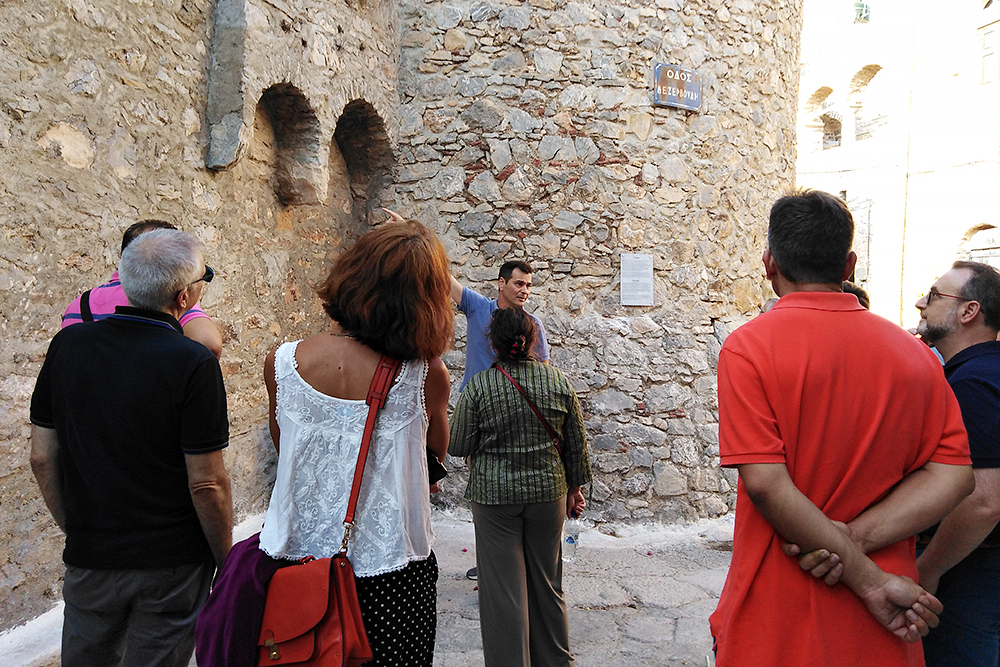
Co-creation activities
On Thursday of 12 September, we started the day with an update on the technological progress of the project by the technical partners. After that, we continued with the co-creation sessions organized by WAAG, which focused on the creation of mastic stories oriented to the museum’s spaces, both indoor and outdoor. All participants were divided into three groups and created stories that linked the history of mastic, its social implications, the chewing gum production line and the external pathways of the natural landscape with the potential needs of different group visitors. The great participation, the fantasy and the ideas of all partners showcased the charm and the impact of this unique product on everyone.
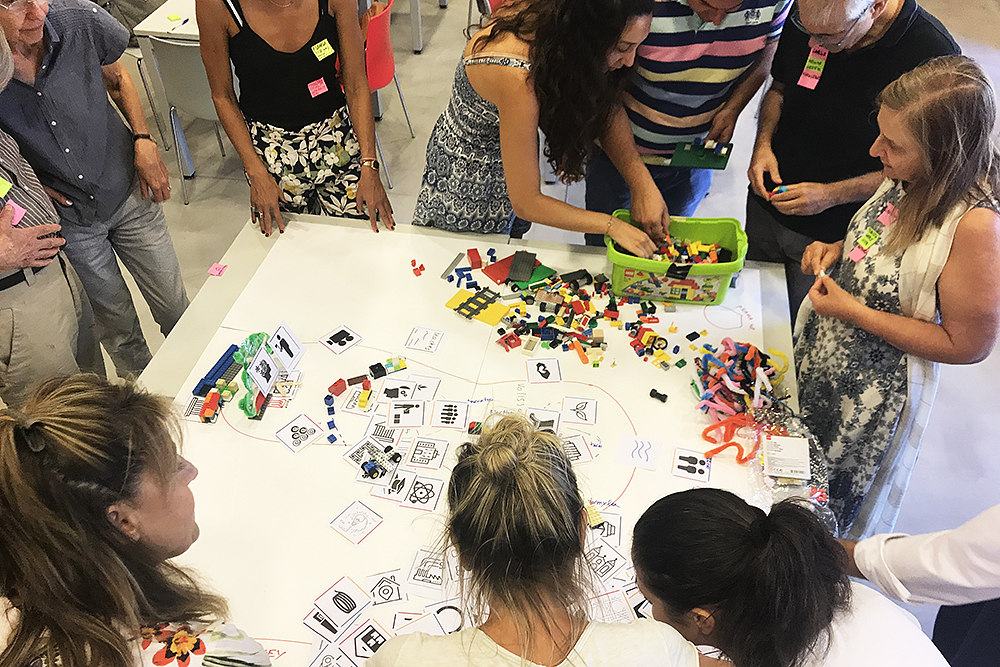
Keynote talk by David Fajoles
Why does the 2003 Convention for the Safeguarding of the Intangible Cultural Heritage matter?
On the final day of the plenary meeting, Friday 13 September, we had the chance to attend the speech of Mr Fajoles, on the importance of the 2003 Convention for the Safeguarding of the Intangible Cultural Heritage. During his talk, Mr Fajoles provided insights on the organisation and operation of UNESCO Culture Conventions and in particular the 2003 convention on Safeguarding of the Intangible Cultural Heritage, as well as the ways in which heritage is inscribed in the representative List of the Intangible Cultural Heritage of Humanity or the List of Intangible Cultural Heritage in Need of Urgent Safeguarding. Mr Fajoles presented in detail the function of Heritage Inventories, awareness-raising on international and national level, as well as the function and value of the Register of Good Safeguarding Practices of UNESCO.
The planning of the next steps and issues of the council put the epilogue to a productive but intense 3-day meeting. The next consortium meeting will take place in Paris, involving the glass pilot, upcoming December. Until then, the scent of mastic has remained strong in everyone.
Short bios of invited presenters
Stavroula – Villy K. Fotopoulou is a graduate of the Department of Archeology and History of the Athens School of Philosophy. She has been working in the Ministry Of Culture since 1996, where she was appointed as a graduate of the National School of Public Administration. She holds postgraduate degrees in Modern History (NCSR, 2008) and in Social Folklore (NCSR, 2011). She is the Director of Modern Cultural Heritage in the Ministry of Culture since 2014. She has represented the Ministry of Culture in International Organizations (UNESCO, EU), on matters of its competence.
David Fajolles is a Professor at Sciences Po – C-factor.tech Paris, in Cultural Policies and International Relations. He is a Former Secretary General of the French National Commission for UNESCO and has worked for the French Ministry of Culture as an advisor to the Minister and as a head of the department studies. He is the founder of Manufacturing of Curiosity, a European initiative for smart innovation in cultural and creative industries.
Manolis Vournous graduated in 1996 from the School of Architectural Engineering of the National Technical University of Athens, and in 2000 with a scholarship from the Institute of State Scholarships he completed postgraduate studies in monument restoration at York University, graduating with distinction. His research interests relate to the architecture of Chios during the period of the Genoese and the Ottomans. With his publications and conferences he has dealt with issues, such as the vigils and fortifying architecture of Chios, the evolution of the post-Byzantine church in Chios and the creation and evolution of its settlements. From 1996 to 2003 he worked in Athens focusing mainly on studies and supervision of the restoration of buildings and the incorporation of new architecture into a historical setting. In 2014 he was elected Mayor of Chios.

